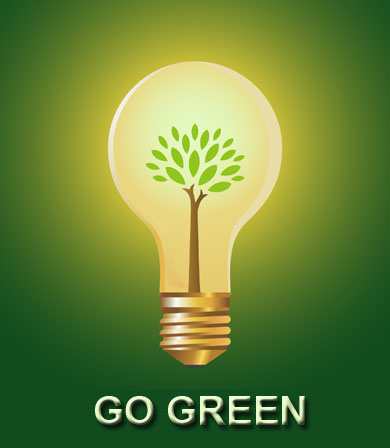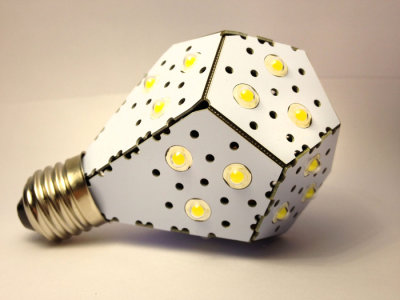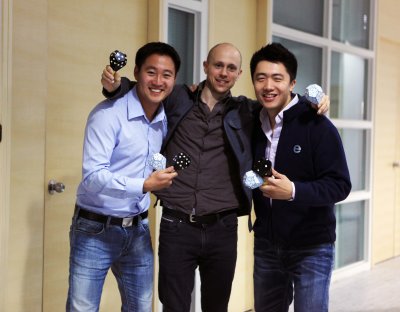1. Visit a farmer's market
Since you have some free time on your hands, make a trip to that unexplored farmer's market you've been eying. Buying local and sustainably-farmed produce dramatically decreases the footprint of your nightly meals, and these picks tend to be healthier and tastier, too. From heirloom veggies to homemade hot sauce, you never know what you might find from farmers and vendors in your area.
Not sure where to find a farmer's market near you? Just punch your zip code into the
USDA or
Local Harvest databases, and you'll get a list of choices in your neighborhood.
2. Explore your neighborhood
If you're ever stumped for a green activity, the best thing you can do is get outside. Spending time outdoors helps you remember why protecting the planet is so important, and you'll also save some cash on your electric bill, as you won't have to use energy for heating and lighting your home.
So, pile on the winter gear, and head to a local pocket park, botanical garden or uncharted walking path to experience something new in your town. Don't know where to go? Head to your town or municipality's Website to find listings of nearby parks, outdoor events and more. Once you get home, get cozy and enjoy one of our yummy
coffee shop-free winter beverages to warm up.
3. Volunteer
Take a page from Dr. King's book and do a little volunteering in your spare time. Lend a hand at a local community garden or animal shelter, or take part in park or beach cleanup.
Most municipalities have a calendar of upcoming volunteer days on their Website. But if you don't see an event that strikes your fancy, a simple Google search with your town's name and the words "Martin Luther King Day (or Presidents' Day) volunteering" should point you in the right direction.
4. Relax the natural way
Planning a day full of much-needed TLC? Skip the pricey eco spa, and do a little relaxing right in your own home. Dim the lights, spark up some all-natural candles and test out one of these
five luxe spa treatments that you can do yourself on the cheap. Most treatments cost less than $10!
And if the winter weather has been taking a toll on your bod, this is a great time to get your fix on. Check out our
DIY guide to curing common winter woes like dry skin, chapped lips and frizzy hair using common pantry ingredients.
5. Do some winter weatherizing
If you've noticed a few drafts in your home, apartment or dorm room, your day off is the perfect time to make things a little more comfortable (and energy-efficient!). Start by taking a walk through all of your rooms, and make note of any drafty areas. Then, use our weatherization guides for
homeowners,
apartment-dwellers and
dorm residents to fix the problem.
Also, take a moment to check out your heating system. Make sure the exterior of your system is clean and free of obstructions, and change the air filter if it looks dirty. If you live in an apartment or dorm room, speak to your landlord or RA about heating system maintenance, as an inefficient system can suck up loads of energy and cost you or your school big bucks on utilities.
6. Start a reuse project
Recycling your household waste is a great step towards sustainability, but why not reuse some of your throw-aways instead? Check out these five
super-elegant decor items made from waste, or
craft with the kids using recyclables for an afternoon of eco fun.
Want to take your day-off project beyond crafting? Check out our
12 crazy ways to go DIY in every room of the house, from homemade cheese to super-functional storage.
SEE: 15 Reuse Projects to Try in 2012
7. Do a packaging purge
Whether the food packaging in your home is recyclable or not, it's always best to find ways to reuse it before tossing it in the bin. Go through your pantry and transfer dry items from their original packaging into reusable storage containers, like these
100 percent recycled containers from
Preserve.
Once you have all your packaging in the same place, consult our
food packaging reuse guide to find ways to repurpose it. And take note of the products that the majority of your packaging waste came from. Can you buy any of these materials in bulk to cut back on waste? How about switching to homemade? A little planning could mean emptier trash cans all year long.
READ: 5 Absurdly Over-Packaged Foods
8. Stock up on bulk
Buying your favorite dry foods in bulk results in a huge reduction in packaging waste. But it can be hard to fit a trip to the bulk-foods store into your schedule. On your day off, make a list of the most common dry items you use in the kitchen: cereal for the kids, rice, beans and pasta for nightly dinners and nuts and dried fruits for healthy snacks.
Head to the bulk-foods store with plenty of reusable bags, and stock up on your favorites sans-packaging. Transfer your items into large reusable containers when you get home to keep them from getting stale.
READ: 5 Reasons to Bulk Up on Food Purchases
9. Choose a veg-based meal
Vegetarian Weeks have been steadily gaining popularity in recent years. But you don't need to cut out meat for a whole week to make a difference. Eating just one vegan or vegetarian meal each week
will save about 35 pounds of meat a year, amounting to 84,000 gallons of water, 245 pounds of grain and 15.5 gallons of gasoline.
Wary about bland and boring vegetarian food? Our library of recipes, including
exotic international cuisine,
tasty low-cal delights and
compostable classics, is sure to change your mind.
10. Plan a green getaway
Having something to look forward to can get you through all those tough weeks at work or school. So, spend some time planning an eco-friendly vacation for yourself this winter. Our go-to guides will help you
plan a romantic, kid-free vacation with your sweetie,
pick the right location for a family getaway or
find a nearby weekend retreat.
Source: www.earth911.com




















